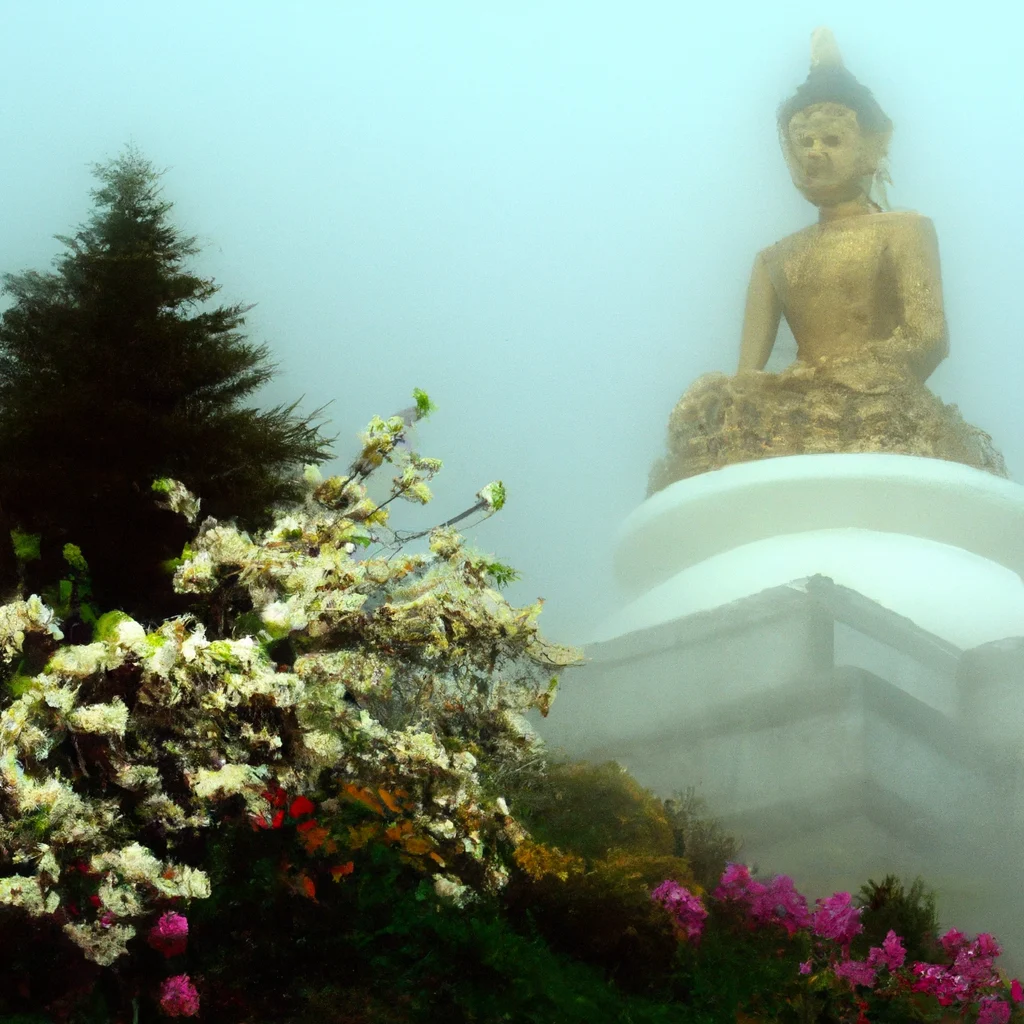Situated in the lush hills of Darjeeling, the Peace Pagoda stands as a remarkable symbol of tranquility and spiritual harmony. This architectural marvel, commissioned by the Japanese monk Nichidatsu Fujii, reflects the core tenets of Buddhism while offering visitors a serene space for reflection and peace amidst the often chaotic world. The Peace Pagoda’s unique structure and serene setting provide a perfect backdrop for those seeking both spiritual solace and a deeper understanding of Buddhist philosophy.
Historical Context of the Peace Pagoda
The construction of the Darjeeling Peace Pagoda began in 1972 and was completed in 1992. It serves not only as a monument but also as a center for promoting peace and understanding among different cultures. The Pagoda is part of a larger movement, initiated by Nichidatsu Fujii, to build similar structures around the world, promoting the message of peace and non-violence.
Fujii’s vision was to create a space that would inspire visitors to embrace the principles of Buddhism. The Peace Pagoda in Darjeeling is one of the most significant of its kind outside Japan, showcasing the universal appeal of the Buddhist message. The architectural style reflects traditional Japanese pagodas, characterized by its multi-tiered structure and intricate design.
Architectural Features of the Pagoda
The Peace Pagoda is an impressive structure standing approximately 28 meters tall. It is constructed from concrete and features four large statues of Buddha, each representing a different aspect of his life, including his birth, enlightenment, teaching, and death. These statues are beautifully crafted and serve as focal points for visitors seeking to connect with Buddhist teachings.
The exterior of the pagoda is adorned with intricate carvings and symbols representing peace and compassion. The white façade of the pagoda contrasts beautifully with the green hills surrounding it, creating an inviting sight for both local residents and tourists.
Significance of the Peace Pagoda
The Peace Pagoda holds deep significance not only for Buddhists but for all who seek peace in their lives. It stands as a reminder of the importance of promoting peace and understanding in a world often filled with conflict. The teachings of Buddhism, which emphasize compassion, mindfulness, and the interconnectedness of all beings, resonate strongly within the walls of this pagoda.
Visitors often report a profound sense of peace while at the site. The atmosphere, enriched by the chanting of monks and the meditative practices of visitors, creates a unique environment conducive to introspection and calmness.
Visiting the Peace Pagoda
Location and Accessibility
The Peace Pagoda is located at the top of the hill in Darjeeling, offering stunning panoramic views of the surrounding mountains and valleys. It is easily accessible via a short trek or by hiring local transport. The journey to the pagoda itself is part of the experience, as visitors traverse through picturesque landscapes and quaint villages.
Opening Hours
The Peace Pagoda is open to visitors throughout the week, with specific hours that can vary seasonally. Typically, it opens at sunrise and closes at sunset, allowing ample opportunity for visitors to experience the changing light throughout the day. Early morning visits are particularly recommended for those wishing to witness the sunrise over the mountains, casting a golden glow on the pagoda.
Cultural Practices
Visitors are encouraged to participate in the cultural practices observed at the pagoda. Regular prayer sessions and meditation practices are conducted, and all are welcome to join. Engaging in these activities can deepen one’s understanding of Buddhism and foster a greater sense of community among visitors. The presence of monks adds a spiritual dimension to the experience, as they often share teachings and insights about Buddhist philosophy.
How to Book on Viator
For those planning to visit the Peace Pagoda and looking for guided tours or transportation options, we recommend booking through Viator. Their platform offers a variety of choices to enhance your visit. You can find more information and make reservations through the following link: Viator Booking.
Conclusion
The Darjeeling Peace Pagoda is more than just a tourist attraction; it is a beacon of hope and tranquility in a fast-paced world. By visiting this sacred site, one not only gains a deeper understanding of Buddhist teachings but also contributes to the collective aspiration for peace and harmony. The journey to the pagoda, along with the experiences within its walls, can lead to profound personal insights and a renewed appreciation for the beauty of life.
For more travel insights and unique experiences, visit Unisho.
Disclaimer: This information is accurate to the best of our knowledge; however, there may be changes or mistakes. Please verify exact details on the Viator booking page.

